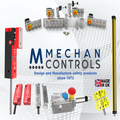
Posted to News on 9th Sep 2008, 11:34
An introduction to tolerance rings and their applications
Stuart Kelly, Appliance Product Manager at Saint-Gobain Performance Plastics Rencol, explains what tolerance rings are and how they can be used between mating components.
Design essentially is an exercise in problem solving; whether the engineer is starting from design concept or redesigning an existing product, it is essential that problems are solved early on in the process. This is true particularly where a round component must be fastened inside the bore of another.
In the final assembly, typical fixing issues can include excessive noise and vibration, resonance and thermal expansion. There may also be a requirement for predictable and repeatable slip or torque overload protection. In many of these circumstances, the use of a tolerance ring can deal with these issues or even eradicate them completely.
The idea behind tolerance rings is very straightforward - they are simply radially sprung steel rings that are designed to be press-fitted between two mating components, such as a motor shaft and a take-off pulley. They are, in other words, a special form of frictional fastener.
Typically manufactured from high-quality spring steel, stainless steel or specialist spring materials, tolerance rings are invariably custom-designed to suit a particular application. All types, however, have one essential characteristic in common: a series of protrusions or 'waves' around their circumference. Each of these waves acts as an individual radial spring, which, when the tolerance ring is in situ, transfers forces between the mating components.
This arrangement means that tolerance rings are capable of handling direct torque transfer, torque slip, axial retention, controlled collapse and radial loading between the mating components. Providing exactly the right combination of properties needed for a particular application involves deciding on the number of waves on the ring, the optimum wave design, and the best material from which to manufacture the ring.
Development process
Tolerance rings are normally purpose-designed for each application with engineers at Saint-Gobain Performance Plastics Rencol working closely with designers from the early stages of development. Once the need to use a tolerance ring is identified, feasibility studies are carried out to check whether the fastener can be physically developed and designed.
At the concept stage, initial samples of the ring are produced and delivered for testing in the final assembly. This is the point at which the true benefits of using tolerance ring can be observed first-hand, such as: reductions in noise and vibration; avoidance of resonance frequencies; provision for predictable and repeatable slip; overload protection; and combating the effects of thermal expansion. In bearing applications, for example, tolerance rings are able to compensate for differential thermal expansion between components, allowing use of components with wider tolerances.
During pre-production, a production-representative quantity is manufactured using production tooling; this is used to prove the production processes and control systems. If successful, the tolerance ring moves into production status after the first full run, and the drawing and system status are updated to reflect this.
Typical applications
Tolerance rings are currently used in a wide range of appliance applications, most commonly in electric motors. For example, in vacuum cleaner motors they are used to retain bearings securely under all operating conditions. Other applications include: retaining bearings in washing machine drums; mounting bearings and components onto rollers in photocopiers, printers and other paper handling machines; fixing clutch assemblies into plastic housings; and mounting transmission component bearings in plastic housings on floor cleaners.
Tolerance rings are well suited to bearing retention applications in as-cast, as-pressed or as-moulded housings, thereby eliminating the close-tolerance machining of the bearing bore. Tolerance rings can also be used to compensate for differential thermal expansion in dissimilar materials, for example in alloy or plastic housings, and can also tolerate high levels of vibration. Operational speeds in excess of 20,000rpm and temperatures up to 150degC can be readily accommodated with no loss of bearing retention.
However, tolerance rings can be used in other applications besides bearing retention. Power tools, such as drills, saws and hedge trimmers, need to integrate some sort of torque overload protection to prevent the motor from stalling when an overload condition or jam occurs. This safeguard also helps eliminate the possibility of the motor burning out and prevent damage to the drill bit, if it is a power drill, and drive gears. Here the specially designed tolerance ring is inserted between the gear and the hub to create an interference fit. Since the parts are rigidly connected through the ring, a zero-backlash connection is achieved. At a pre-determined torque level, when the load reaches a point at which damage would otherwise occur, the tolerance ring flexes and slips. As soon as the overload condition is removed, the interference fit is re-established, allowing the power tool to continue normal operation. Key to this particular design is that overload can occur many times - up to one thousand 360-degree slips can be accommodated - without adversely affecting operation.
Tolerance rings are convenient, versatile and inexpensive, yet they solve a broad range of design problems and deliver valuable benefits. Many appliance manufacturers are already enjoying these benefits - perhaps it is time for you to join them!
Full details of Saint-Gobain Performance Plastics Rencol's products and design services can be obtained by calling +44 (0)117 9381700 or visiting www.rencol.co.uk/en/appliance.html
Want the latest machine building news straight to your inbox? Become a MachineBuilding member for free today >>
Saint-Gobain Performance Plastics Rencol Ltd
16 Concorde Road
Patchway
BS34 5TB
UNITED KINGDOM
+44 (0)117 938 1700

















